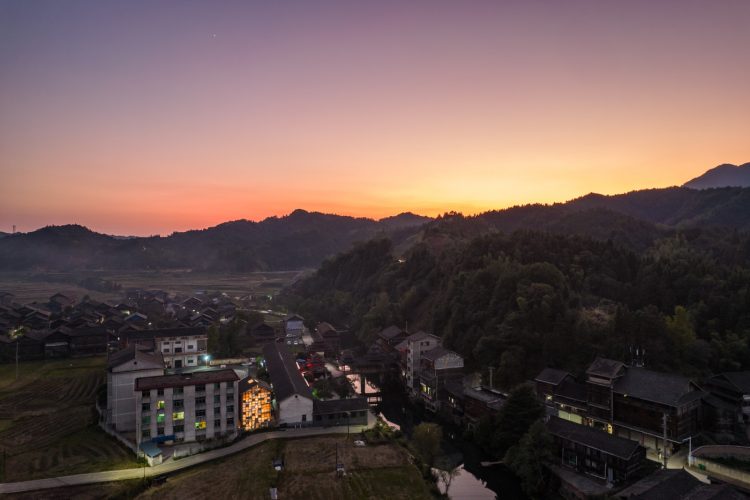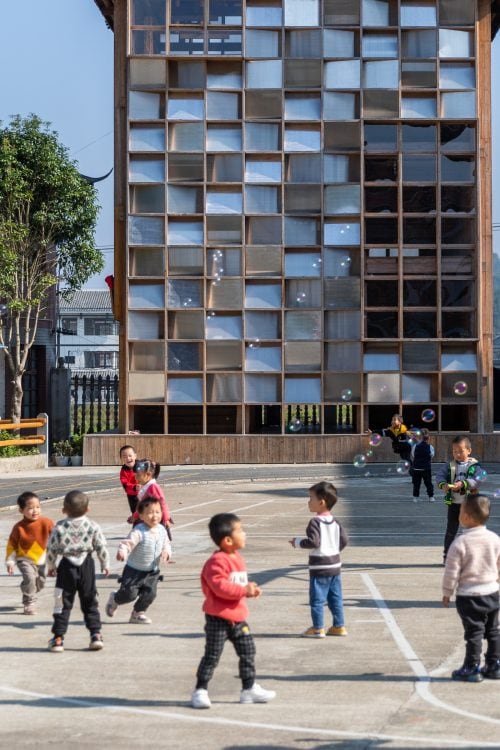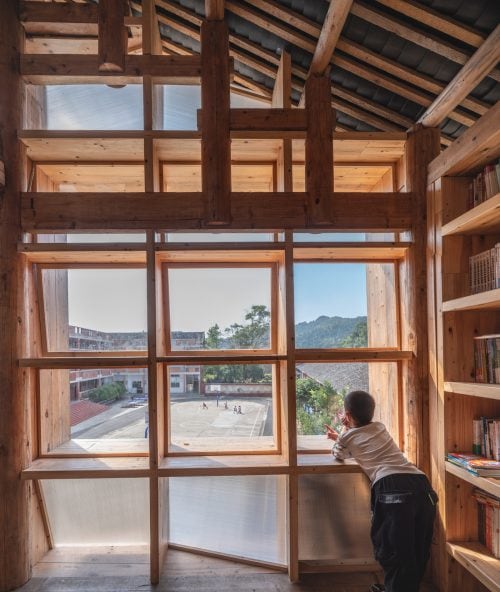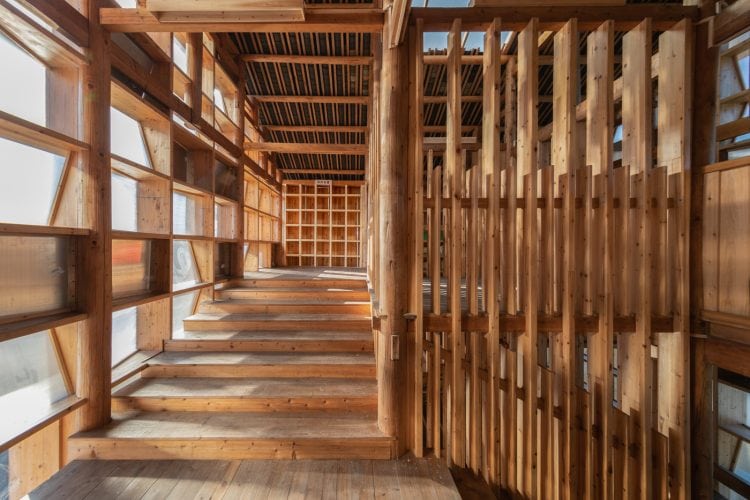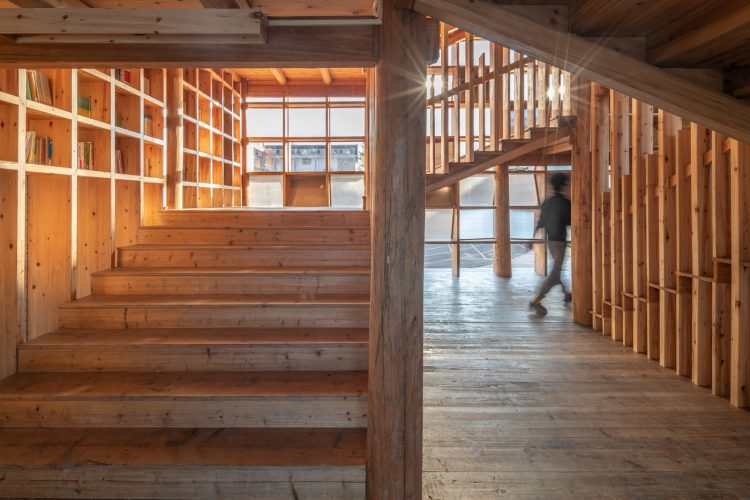This is a place where kids read and play at the same time, and a new paradigm for rural village libraries in China
Imagine a staircase that never ends, as an infinite loop of risers and treads squeezed into a traditional timber house. Adding to the mystery, the staircase has no destination, but rather is a destination itself. The walls of the house have been transformed into a matrix of bookshelves and windows overlooking a courtyard. However, this is no ordinary children’s library. The Pingtan Book House designed by Condition_Lab is a place where kids can read and play at the same time, and a new village library paradigm in China.
For years, Dong Minority villages have been confronted with the ever-present reality of the decline of their beautiful architectural heritage, eradicated by the arrival of a foreign material - concrete. Entire villages, built over centuries from a single sustainable material - indigenous China Fir - are rapidly losing their identity. As a school built entirely of concrete 20 years ago on the edge of the village, the Pingtan primary school is a prime example of this condition. The complex, which accommodates more than 300 children aged 6-13, is comprised of a cluster of five buildings, including a Hall and Canteen, Classroom, Dormitories, and an Administration building, all surrounding a courtyard.
For these reasons, Condition_Lab saw an opportunity to make a small insertion by introducing a timber structure that retains the Dong architectural DNA, and which could reawaken a sense of wonder in their heritage. The design fosters a form of “living heritage” to reconnect and inspire children, while allowing them to appreciate their precious culture via direct engagement.
Condition_Lab collaborated closely with local carpenters and students from the CUHK School of Architecture. Through a process of participation, the firm gained the trust of villagers and the school principal, enabling them to create a social narrative that also helped find donors to sponsor the project. In the end, the building was built with a single donation of 600,000 HKD from the Chan Cheung Mun Chung Charitable Fund, which covered the entire cost of construction.
The value of this project lies in two fundamental lessons. First, it relates directly to the children of Pingtan who, beyond enjoying playing in the library, have learned that their culture lives and remains relevant in this rapidly changing world. The second lesson relates to the discipline itself, at a moment when architecture, particularly in urban metropolises like Hong Kong, appears to have lost its soul to ever demanding developers.
About Condition_Lab
Condition_Lab embraces design as a creative vehicle for problem-solving through purpose. The firm's goal is to help people to leverage design to effect change through purpose. Every project has a mission, and architecture’s influence transcends the individual building. Founded in 2018, Condition_Lab is an alternative architectural practice combining Social Enterprise, Research, and Design all in one. By developing designs, models, prototypes, and buildings, the firm aims to connect people through creations. Condition_Lab consists of three directors: Milly Lam (1991), Paula Liu (1993), and Peter W. Ferretto (1972), who work together along with a team of Researchers, Architects, and Students. The firm is headquartered within the Chinese University of Hong Kong, and its projects are based in China and Africa.

 English
English 日本語
日本語
